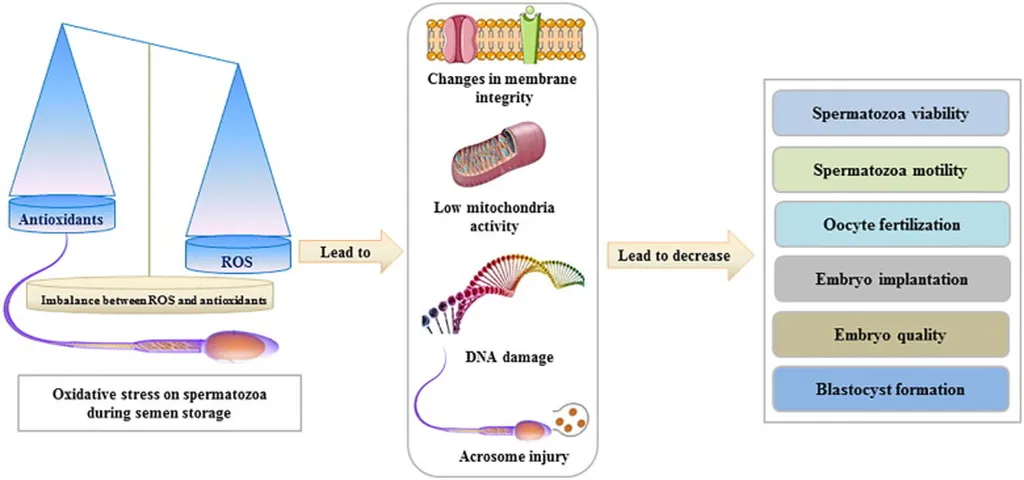In a significant stride for livestock breeding and agricultural technology, researchers have discovered that a combination of antioxidants can markedly improve the quality and fertility of frozen semen in Black Bengal bucks. This breakthrough, published in the journal *Veterinary and Animal Science*, could revolutionize artificial insemination practices and enhance breeding programs in the agriculture sector.
The study, led by Md. Abul Bashar from the Department of Animal Breeding and Genetics at Bangladesh Agricultural University, explored the effects of reduced glutathione (GSH), l-ascorbic acid (AA), and their combination on the cryopreservation of spermatozoa. Cryopreservation, or the freezing of semen, is a critical technique in animal breeding, enabling the preservation of genetic material and facilitating artificial insemination.
The researchers found that supplementing the semen extender with GSH and AA significantly improved several key parameters of sperm quality. “We observed a marked improvement in total motility, progressive motility, and normal morphology of the spermatozoa,” Bashar explained. The combination of GSH and AA yielded the best results, suggesting a synergistic effect between the two antioxidants.
Moreover, the study revealed that the antioxidants reduced levels of malondialdehyde (MDA) and hydrogen peroxide (H2O2), indicators of oxidative stress that can damage sperm cells. This reduction in oxidative stress likely contributes to the improved quality and fertility of the cryopreserved spermatozoa.
The implications for the agriculture sector are substantial. Artificial insemination is a cornerstone of modern livestock breeding, enabling farmers to select and propagate desirable genetic traits efficiently. By enhancing the quality and fertility of frozen semen, this research could lead to higher success rates in artificial insemination, ultimately boosting productivity and profitability for farmers.
“This research opens up new avenues for improving the efficiency of artificial insemination in livestock,” Bashar noted. “The use of antioxidants in semen extenders could become a standard practice, benefiting both breeders and farmers.”
The study also highlights the potential for further research into the use of antioxidants in other aspects of animal reproduction and breeding. As the agricultural industry continues to evolve, such innovations could play a pivotal role in meeting the growing demand for food and improving the sustainability of livestock production.
In the broader context, this research underscores the importance of interdisciplinary approaches in addressing agricultural challenges. By combining knowledge from fields such as biochemistry, genetics, and veterinary science, researchers can develop innovative solutions that drive progress in the agriculture sector.
As the world grapples with the challenges of climate change, food security, and sustainable agriculture, breakthroughs like this offer a glimmer of hope. They demonstrate the power of scientific inquiry to transform industries and improve lives, paving the way for a more prosperous and sustainable future.
The study was published in *Veterinary and Animal Science*, with Md. Abul Bashar from the Department of Animal Breeding and Genetics at Bangladesh Agricultural University serving as the lead author.

